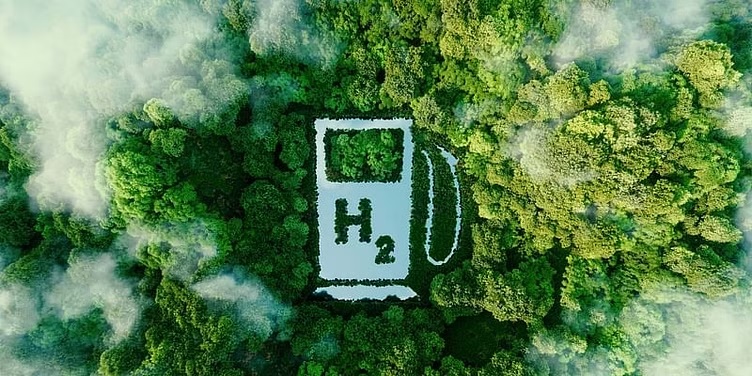
The document talks of creating Hydrogen Highways, and green ammonia bunkers and refuelling facilities at least at one port by 2025. Besides, oil and gas PSUs will be required to charter at least one ship each to be powered by green hydrogen or derived fuels by 2027.
The Indian government on January 13 released the blueprint for its ambitious National Green Hydrogen Mission with a hope that its manufacturing capacity would double to 10 million metric tonnes (MMT) from its initial target of 5 MMT per year till 2030.
“The overarching objective of the mission is to make India the Global Hub for production, usage and export of Green Hydrogen and its derivatives. The Mission will lead to significant decarbonisation of the economy, reduced dependence on fossil fuel imports, and enable India to assume technology and market leadership in Green Hydrogen. To achieve these objectives, the mission will build capabilities to produce at least 5 MMT of Green Hydrogen per annum by 2030, with a potential to reach 10 MMT per annum with growth of export markets,” stated the document issued by the ministry of new and renewable energy (MNRE).
Green hydrogen requires electrolysers, which currently are expensive and cost at least $ 00 per KWh. Hence, to give an initial push, the government will roll out production-linked incentive schemes (PLIs) for the domestic manufacture of electrolysers and the production of green hydrogen.
Electrolysers use electricity to break water into hydrogen and oxygen. When the electricity used for the electrolysis is sourced from renewable energy, the hydrogen produced is called green hydrogen.
The allocation for incentives is Rs 17,490 crore, about Rs 13,000 crore for production of green hydrogen and Rs 4,490 crore for manufacturing electrolysers. The total initial outlay for the mission is Rs 19,744 crore, which also includes Rs 1,466 crore for pilot projects, Rs 400 crore for research and development (R&D) and Rs 388 crore towards other mission components.
Phased implementation
The mission will be in two parts, Phase I from now till 2025-26 and Phase II from 2026-27 to 2029-30.
Under the first phase, in 2023-24, the government aims to notify mandatory green hydrogen consumption targets for certain sectors that are big consumers of the gas. Notification of bids and award of work for green fertilisers is being targeted in the upcoming financial year, while the adoption of relevant international standards will be ensured too. A separate notification on the PLI schemes will also be rolled out during this period. Between 2024 and 2026, the government will seek proposals for pilot projects and start the preparatory work for green hydrogen capacity installation.
In the beginning of Phase II, the government is hoping that the cost of green hydrogen will become competitive with fossil fuel-based alternatives in the refinery and fertiliser sectors, allowing accelerated adoption and, in turn, growth in production. “Depending upon the evolution of costs and market demand, the potential for taking up commercial-scale green hydrogen-based projects in steel, mobility and shipping sectors will be explored. At the same time, it is proposed to undertake pilot projects in other potential sectors like railways, aviation, etc. R&D activities will be scaled up for continuous development of products. The second phase activities would enhance penetration across all potential sectors to drive deep decarbonisation of the economy,” reads the document.
New refineries, city gas grids to be green hydrogen-compatible
The document states that the ministry of petroleum and natural gas (MoPNG) will facilitate the uptake of green hydrogen in refineries and city gas distribution projects through both public sector entities and private players.
“New refineries and city gas projects will be planned and designed to be compatible with maximum possible green hydrogen deployment, with a goal to progressively replace imported fossil fuels,” it stated.
About 5 MMT grey hydrogen—produced using non-renewable energy sources—is consumed annually in India, and about 99 percent of this is used for petroleum refining and the manufacture of ammonia for fertilisers.
For city gas, older networks will require retrofitting/upgrading of system components, but new and upcoming networks are likely to be compatible with high blend ratios of hydrogen, the document stated.
Fertiliser sector to use green ammonia
The government is likely to call for competitive bids to set up fertiliser plants based on green hydrogen or green ammonia. Two plants each for the production of green hydrogen-based urea and green hydrogen-based di-ammonium phosphate are targeted to be set up through the competitive bidding route. By 2034-35, the aim is to substitute all ammonia-based fertiliser imports with domestic green ammonia-based fertilisers, reads the mission document.
Competitive bidding for procurement
To boost cost-competitiveness of green hydrogen, a mechanism for dollar-denominated bids for green hydrogen/ ammonia will be explored.
“In early years of technology deployment, it is essential to aggregate demand through an enabling framework of bidding and procurement processes for achieving scale and stability in long-term agreements. In this regard, MNRE will frame model guidelines for transparent competitive bidding for procurement of green hydrogen and its derivatives and develop a suitable regulatory framework for certification of green hydrogen and its derivatives as having been produced from RE sources. The bidding guidelines will be technology agnostic to allow both electrolysis and biomass-based generation of green hydrogen,” it stated.
Shipping
Shipping is one of the three main sectors where the government plans to fund the initial pilot projects. The government has committed that green ammonia bunker (marine fuel) and refuelling facilities will be present in at least one port by 2025 and that such facilities will be established at all major ports by 2035.
Besides, oil and gas PSUs will be required to charter at least one ship each to be powered by green hydrogen or derived fuels by 2027. Thereafter, the companies will be required to add at least one ship powered by such fuel for each year of the mission. These PSUs currently charter about 40 vessels for transport of petroleum products.
Green steel
Considering the higher costs of green hydrogen at present, the document states that steel plants can begin by blending a small percentage of green hydrogen in their processes. “The blending proportion can be progressively increased as cost-economics improves and technology advances. Further, upcoming steel plants should be capable of operating with Green Hydrogen. Green field projects aiming at 100% green steel will also be considered,” the document reads.
Transport
The document talks of creating hydrogen highways. The necessary green hydrogen production projects, distribution infrastructure and refuelling stations will be built along such highways.
“This will enable Hydrogen fuelled inter-state buses and commercial vehicles to ply on such routes. The Mission proposes to support deployment of fuel cell electric vehicle (FCEV) buses and trucks, in a phased manner on pilot basis. Financial assistance will be provided to close the viability gap due to the relatively higher capital cost of FCEVs in the initial years. The Mission will also explore the possibility of blending Green Hydrogen based Methanol/Ethanol and other synthetic fuels derived from Green Hydrogen in automobile fuels.”
The government also intends to invest heavily in R&D of green hydrogen, with planned phase-wise mission modes.

















